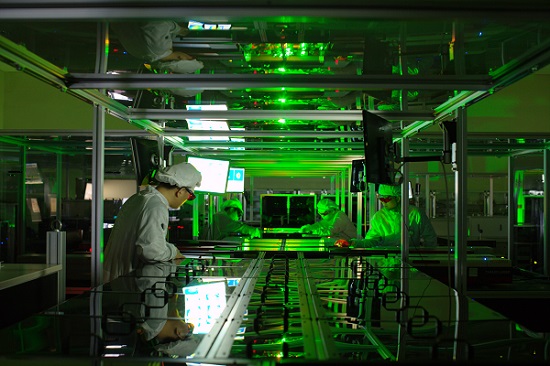At the Center for Relativistic Laser Science (CoReLS, Institute for Basic Science in the Republic of Korea), researchers report they have achieved high-laser pulse intensity of over 1023 W/cm2. The intensity, the researchers said, is a record that is approximately 10× higher than that previously reported by a team at the University of Michigan in 2004.
The ultrahigh intensity pulses will enable exploration of complex interactions between light and matter in ways not previously possible
The achievement builds on previous work in which the researchers demonstrated a femtosecond Ti:sapphire laser system that produced 4 petawatt (PW) pulses with durations of less than 20 fs while focused to a 1-µm spot. The laser, reported in 2017, produced a power roughly 1000× larger than all the electrical power on Earth in a laser pulse that lasted only 20-quadrillionths of a second.

Researchers at the Center for Relativistic Laser Science work on the CoReLS 4-PW laser, which recently achieved a record intensity of 1023 W/cm2. Courtesy of Chang Hee Nam, CoReLS.
The team achieved the milestone by focusing the beam even more tightly; it used an off-axis parabolic mirror to focus a 28-cm laser beam down to a spot just 1.1 µm wide. That level of diffraction-limited tight focusing can be obtained only with a clean laser beam free from wavefront distortion. To achieve that level of cleanliness, the team used a set of deformable mirrors to correct the wavefront distortion.
The CoReLS 4-PW laser is a femtosecond, ultrahigh power Ti:sapphire laser based on the chirped pulse amplification technique. A low-energy femtosecond pulse from the front end is stretched to a nanosecond pulse by the pulse stretcher, then amplified to 4.5 J by the two power amplifiers, and then up to 112 J by the two booster amplifiers. The size of the laser beam is increased along its path by a series of beam expanders: 25 mm directly after the power amplifiers, 65 mm at the entrance of the first booster amplifier, 85 mm at the entrance of the second booster amplifier, and 280 mm at the entrance of the pulse compressor. In the pulse compressor, the laser pulse is recompressed to 20 fs, which brings its peak power up to 4 PW after the compression.

After the final booster amplifier, the researchers placed the first deformable mirror, which was 100 mm in diameter, to correct the wavefront distortion accumulated to the front end to the final beam expander. The second deformable mirror, with a diameter of 310 mm, was installed after the pulse compressor, the beam delivery line, and the target area. In the target chamber, the PW laser beam was tightly focused with an f/1.1 off-axis parabolic mirror, which possessed an effective focal length of 300 mm.
For imaging and characterization of the focused spot, the focused beam was collimated by an objective lens. It was then divided into two beams by a beamsplitter for the focal spot and wavefront characterization. A camera was used for the focal spot monitoring of the reflected laser beam.
“This high-intensity laser will allow us to examine astrophysical phenomena such as electron-photon and photon-photon scattering in the lab,” said Chang Hee Nam, director of CoReLS and a professor at Gwangju Institute of Science and Technology. “We can use it to experimentally test and access theoretical ideas, some of which were first proposed almost a century ago.” He added that he believes the intensity laser will be particular useful for especially strong field quantum electrodynamics, which has been mainly dealt with by theoreticians.
The research was published in Optica (www.doi.org/10.1364/optica.420520).